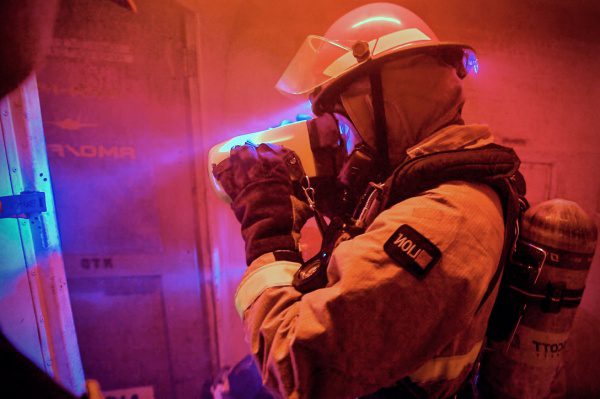Sexual Assault and Alcohol in the Military and College
What role does alcohol play in military rape and sexual assault on campus
Sexual Assault On College Campuses
In terms of victims, sexually active women are more vulnerable to assault, specifically white women, first-year students, non-college students, and former victims. When students first enter campus, it is essential to understand the risks associated with being in the “red zone” as a student. Freshmen and transfer students are now more likely to be victims of their inexperience with college life, campus party culture, and the lack of a close social circle to look after them.
Military Sexual Assaults and College Campus Rape
According to advocacy group RAINN, more than one in four female undergraduate students and one in 15 male undergraduate students experienced sexual assault, rape, physical violence, incapacitation, or violence in college. According to the Rape, Abuse and Incest National Network (RAINN) (RAINN), 13% of college students have experienced rape or sexual assault, 26.4% of female students, and 6.8% of male students. Although it is known that this is a significant problem of assault on campus, a recent survey of the Association of American Universities found that 20% of female students have been victims of sexual assault or sexual misconduct at some point in their college life1. Other studies have found that the most common sexual abuse is perpetrated by men, ranging from 6% to 8%.
While the methodology and definitions are disputed, there is no doubt about the severity of the attacks on campus. However, the institutional structure is a very different issue, and campus attacks require different treatment, in short.
Most victims on campus do not report sexual violence
Most victims on campus do not report sexual violence because they distrust how they are treated by the community, friends, family, peers, professors, and the university. Reasons, why college women choose not to report an assault include embarrassment or fear of repetition.
Male college-age boys (18-24) are 78% more likely than their peers to be victims of rape or sexual assault. Men between the ages of 18 and 24 are five times more likely to be victims of rape and sexual assault than non-students.
Sexual assault survivors and statistics
Only 20% of female students between the ages of 18 and 24 report to law enforcement. Since the study allowed victims to give more than one reason why they did not report to law enforcement, the statistics are not 100% complete. Only one in five college-age female survivors gets help from a victim counseling center.
According to the National Network on Rape, Abuse, and Incest (RAINN), one in six American women will experience attempted or completed rape in their lifetime. Dr. Laura Johnson, Associate Vice President for Equity and Title IX Coordinator, said that the prevalence of sex crimes on college campuses is attributable to students experimenting with newfound freedom and substance use in college. Those between the ages of 18 and 22 have the highest risk of sexual assault.
Violence against communities of Asian and Pacific islanders
Many national studies fail to measure the extent of violence against communities of Asian and Pacific islanders, relying on small sample sizes. Therefore, we provide data on survivors who are not students to give an insight into the increased violence they face.
In October 2017, Our Turn, a Canadian student initiative to end sexual assault on campus, published a survey to evaluate sexual assault at 14 Canadian universities and action plans for student unions to support sexual assault survivors. In 2011 a Chicago Tribune investigation of six Midwestern universities revealed 171 alleged sex crimes committed by students investigated in five years by the police. The police arrested 12 alleged perpetrators and four convicted. In one in four cases, the attacker was a student, and assaults of students are the most common form of sexual assault on campus. The arrest and conviction rates in these cases were not much lower than the national average.
Sexual assault on campus
Activists are seeking to strengthen Title IX programs on college campuses to have more accountability on campus. Under California’s MEAN guidelines, the California Higher Education Institute is required to adopt specific protocols and policies that seek to combat power-based violence on California college campuses, such as sexual assault. Policies and procedures must contain clear, readable, and accurate information accessible to all campus community members. This includes descriptive and operational definitions of sexual assault, rape, and other forms of sexual violence and explains how these actions violate acceptable conduct standards and constitute criminal acts in some cases.
The University of Nebraska-Lincoln and other institutions want to prevent sexual violence on campus. They are beginning to engage young men to prevent sexual violence and hold those who commit violence accountable for their actions. However, because of the security risks on campus, students need to understand what sexual violence is, know their rights in the event of assault and familiarize themselves with educational resources on this subject. Suppose a college student is a victim, perpetrator, or peer of sexual assault. In that case, it is up to you to protect and look out for your friends and peers, discuss sexual assault and violence with everyone and work to make your campus and community safer.
Rape culture on college campuses
If we as students, educators, and society would like to prevent and support a sexual assault on campus, we must have open and honest conversations about sexual assault, sexual abuse, and sexual violence. Unfortunately, the rape culture in universities is deeply rooted and cannot be fixed from a starting point.
Colleges risk sending a damaging message to other students by not removing perpetrators from campus or removing a perpetrator who has sexual assault serious enough to warrant suspension or expulsion. Being part of a campus community is a privilege, not a right. Colleges are doing their students a “disservice” by permitting those who have committed sexual assaults under Title IX to continue living and learning with their peers.
Sex Offenses and Alcohol
Thissen wrote in the Supreme Court opinion that he and his fellow judges are aware and concerned by the prevalence of sexual assault in the United States. He cited statistics from the Minnesota County Attorneys Association showing that half of all female victims of sexual violence are in the United States, including an estimated 10 million women who have been raped while under the influence of alcohol or drugs. Thus, the concessions in the DFSA decision left their mark on the women in Minnesota.
Although sexual violence rates reported are low, according to national reports from the National Rape, Abuse and Incest Network (RAINN), about one in four victims, report their assaults to the police.
Half of all sexual assaults, including rape, involve alcohol consumption by both perpetrator and victim. In the US Army, it is estimated that 44 percent of violent sexual crimes are related to alcohol use of perpetrators and victims.
Alcohol and not drugs appear to play a role in the majority of sexual offenses. While alcohol is involved in a significant number of sexual assaults, a significant proportion of drug-enabled sexual assaults involve other drugs mixed with alcohol. More than half of sexual assaults involving acquaintances involved alcohol consumption by both the perpetrator and the victim.
Attitudes about women’s alcohol consumption, which influence perpetrators’ actions, are often used as an excuse for sexual assaults on intoxicated women. In addition, perpetrators often blame their alcohol consumption for sexual aggression, even though there is no cause-and-effect relationship.
Often go hand in hand with drug use and criminal behavior, and sex crimes are no exception. Remember that it is not alcohol that causes sexual violence but the person who perpetrates it. A drunk person who cannot give consent to engage in sexual activity becomes the victim of an assault.
Date rape drugs and sexual assault
Recent discussions about the use of date-rape drugs to facilitate sexual assault and rape have confirmed that alcohol, not drugs, is the most important substance used by sex offenders to commit their crimes (Hindmarch et al., 2001; Grubin and Gunn, 1990; Horvath, 2006; Koss, 1985; KOSS and Dinero, 1989; Lebeau et al., 1998; Scott, Ham, and Burton, 2005; Seifert, 1999). However, it is important to remember that alcohol consumption by those who commit sexual violence is often considered more common than drugs used in the rape. Thus, although drug problems do not differ between serial and non-serial sex offenders, we cannot exclude the important role of alcohol and drug use in sexual aggression.
Increased alcohol consumption appears to be positively correlated with the likelihood of responding to other aggressions; this finding is supported by higher incidence rates of alcohol-related violent crimes such as domestic violence, child abuse, sexual assault, and rape (Boden, Fergusson, and Horwood, 2012; Bushman & Cooper, 1990; Murdoch & Ross, 1990).
Third, certain personality traits, such as impulsiveness and anti-social behavior, may influence men’s propensity to drink and commit sexual assaults.15 In our study, alcohol consumption and associated problems did not differ significantly between serial and non-serial sex offenders. The enormous heterogeneity among sex offenders creates several problems in terms of validity and reliability. Nevertheless, our study shows that serial sex offenders exhibit different characteristics from non-aerial sex offenders, a finding that may help develop effective proposals for managing both types of inmates.
Relationship between perpetrator and victim
To investigate alcohol as a distal factor, researchers focused on the relationship between perpetrator and victim of long-term drinking patterns (e.g., Regular or heavy drinking) and history of sexual assault and beliefs about the impact of alcohol on life expectancy and what promotes alcohol-related sexual assault. However, since most alcohol involved in sexual assault is either perpetrator or victim, regardless of the influence of their alcohol consumption, this is difficult to investigate.
Although the cross-section of the current study makes it impossible to establish causality or determine alcohol consumption at the time of the alleged incident, there is good evidence for a link between alcohol consumption and sexual assault. Women who experienced non-consensual drinking sex were more likely to cite a hypothetical sexual scenario where two people were both intoxicated than women who did not have the same experience and felt that their own experience reflected this scenario (Table 3). Taken together, these findings support the double standard of drinking, in which women are blamed for more sexual crimes when they consume alcohol than when they drink alone, and defendants are considered more likely to commit crimes.
Drug Facilitated Sexual Assaults
Many drugs are used to put victims out of action, but alcohol is more common. Sexual assault on campus (75%) refers to both the victim’s and perpetrator’s alcohol consumption. This applies, in particular, to rape in the circle of acquaintances: 75% of men and 55% of women drink or take drugs before, during, and after rape in the circle of acquaintances.
Victims of sexual assault often resort to drugs and alcohol to cope with the emotional aftermath of the incident. Unfortunately, drugs and alcohol impair users’ thinking, judgment, and motor movement, making it difficult to identify the perpetrator, defend themselves or commit an attack.
Victims of DFSA often assume that they did not have sexual assault because they were under the influence of drugs or alcohol. However, trauma to victims of sexual abuse and assault can lead to drugs and alcohol to cope. Victims of abuse who have been drugged can experience physical and emotional distress as they recover from the effects of the drug or alcohol on their bodies.
Alcoholism and Psychology and Sexual Assault
According to Kasey Creswell, associate professor of psychology at Carnegie Mellon University’s Dietrich College of Humanities and Social Sciences, understanding the context in which drinking happens has important implications for understanding the risk of alcohol use disorder (AUD) and the underlying mechanisms that explain the increased risk. To understand what motivates people to drink, they need to know their drinking habits, perceptions, and perceptions around alcohol. Creswell is currently working on a study to determine the impact of the pandemic on alcohol consumption and alcohol problems, to test whether increased drinking alone, negative effects, and coping with alcohol problems motivate people to drink, and explain pandemic changes in alcohol consumption problems.
Treatment of behavioral problems
According to Cognitive-Behavioral theory, learned drinking patterns can be altered by applying combined cognitive-behavioral changes to help people with alcohol dependence to reach and maintain sobriety (Miller and Hester, 1989). Treatment of behavioral problems with alcohol consumption disorders refers to systematic activities to change the behavior (patterns of behavior) of individuals and their families. In summary, the cognitive-behavioral conceptualization of alcohol dependence and consumption is regarded as a learned behavioral change by identifying its history and consequences and modifying the response of drinkers to them.
Psychology can help us understand why some people find it difficult to end unhealthy behaviors such as alcoholism. For example, self-efficacy is distorted by negative moods, and people with alcohol problems may be more depressed and need help remembering and recognizing relevant successes. Conversely, people with an alcohol problem who have never tried to control their consumption can be optimistic about their abilities and need support to predict and prepare for potential challenges.
Alcoholism and Sexual Assault in the Military
If the drinker cannot solve the alcohol problem, a psychologist can help reduce alcohol consumption and minimize the problem. In this patient, alcohol consumption was motivated by the desire to deal with and address high anxiety and low mood without increasing denial or self-efficacy (e.g., “I can manage my anxiety without drinking”). The psychologist taught desire management skills to boost confidence in alcohol control, applied cognitive restructuring, and exaggerated the positive expectation that alcohol would relax me and many other activities.
A good first step is to talk to your GP, who can assess your general health, assess the severity of alcohol consumption, help develop a treatment plan, refer to an addiction specialist or treatment program and determine whether you need medication for alcohol. Online and community-based recovery groups can help with addiction and alcohol withdrawal treatment. Support groups such as Alcoholics Anonymous and Smart Recovery can help you feel less isolated and provide the opportunity to learn and connect with others with similar problems and shared experiences.
Not all people respond well to medication, but many find it helpful to reduce cravings and maintain abstinence when combined with behavioral therapy and support. An analysis of cognitive-behavioral approaches, for example, found that 58 percent of patients receiving cognitive behavioral therapy performed better than participants in a comparative study and that motivational interventions reduced how much adolescents drank in the emergency room after alcohol-related treatment. [4] Interventions entitled “Facilitate Alcoholics Anonymous” increased the likelihood of bringing up alcohol. [5] Many people with alcohol problems also suffer from other mental illnesses, such as severe anxiety or depression. Medical problems may occur during alcohol withdrawal, but the detox can be controlled.
Alcohol and Military Rape
Our topic is addiction, and we go into detail the various psychological reasons why people become addicted to alcohol. Since alcoholism originates in a biological process, recovery from alcoholism requires people to make significant changes. For example, a significant number of people change their drinking patterns on their own or use some form of treatment.
Alcoholism is the consumption of alcohol that leads to significant mental and physical health problems. Alcohol use disorders include alcohol abuse and dependence. Still, alcoholism is the official medical term for “recurrent alcohol use that causes significant impairment or inability to take responsibility,” according to the American Psychiatric Association’s Diagnostic and Statistical Manual of Mental Disorders. Thus, alcoholism is also known as an alcohol consumption disorder (AUD). Alcohol consumption leads to mental or physical health problems ranging from mild to severe and open.
In a small number of people, prolonged and severe alcohol abuse can lead to open dementia. In the Western world, about 15% of people have an alcohol problem at some point. Alcoholism is considered a chronic consumption of alcoholic drinks. It is sometimes referred to as alcohol dependency syndrome, defined as the characteristic behavior of an alcoholic that impairs control over drinking and leads to a loss of control over all aspects of life.
Most people know that alcohol affects their brain during drinking in the short term, but few people are aware of the potential long-term effects of alcohol abuse on the brain. As a result, people with alcohol problems drink excessively and put themselves and others at risk. There are differences between causal drinking and problematic drinking, including whether a person drinks because of the effects of alcohol on them.
People develop alcoholism when they lose the ability to control their alcohol consumption. One of the main causes of alcoholism is coma drinking and forgetting life’s struggles and problems. In addition, alcohol addiction leads the consumer to continue drinking despite the consequences.
Physical dependence on alcohol
This physical dependence on alcohol makes it more difficult for individuals to control their consumption, resulting in a strong urge to drink alcohol. People with alcohol problems also develop a negative expectation of drinking. These properties play a role in reducing the ability of alcoholics to stop drinking.
This can lead to changes in the way people feel pleasure, make decisions, and control behaviors caused by alcoholism. In addition, social skills impaired by alcohol consumption disorders, including impairment of facial perception, prosody perception, problem theory of the mind, and deficiencies in understanding humor, are also impaired in people who abuse alcohol.
Alcoholism in the United States
Alcohol addiction is characterized by tolerance or the need to drink more to achieve the same or higher withdrawal symptoms when drinking is stopped. In addition, physical alcohol dependence can make it difficult for individuals to control their consumption, resulting in a strong urge to drink alcohol.
The risk of alcohol dependence begins with low alcohol consumption and increases with the amount of alcohol consumed; the pattern of drinking in large amounts occasionally is known as coma drinking. According to the National Institute on Alcoholism and Alcoholism, Coma Drinking in the United States is a pattern that brings in blood alcohol levels up to 0.08 grams or more.
Risk of alcohol dependence
According to the CDC, 46% of adult women say they have drunk in the last 30 days, and 12% of adult women say they have been in a coma drinking at least three times a month. According to the US Federal Government, about half of Americans between 18 and 55.3% have consumed alcohol in the last 30 days. About a quarter (more than four alcoholic beverages on one occasion) have been committed against women, and five% against men [1] [17] [58], and alcohol consumption disorders range from mild to severe.
According to the National Institute on Alcohol Abuse and Alcoholism, more than 5.3 million women are a parent of an alcohol-related disorder, and she suffers from a 5.3 million age group. NSDUH data estimates that 5.8% of American adults under 18, or about 14.4 million people, suffer from alcohol-related disorders. Although more than seven percent of the American population under 18 has an alcohol problem, 13.8 million Americans, or 8.1 million of them, are alcoholics.
Alcohol abuse is a leading risk factor for premature death
According to the World Health Organization report for 15 to 49 people 2014, alcohol abuse is a leading risk factor for premature death and disability. In 2016, alcohol accounted for 14 percent of all deaths among 20- to 39-year-olds. In addition, according to the study, 9.5 percent of pregnant women between the ages of 15 and 44 in the United States consumed alcohol last month.
Minor drinking is a serious public health problem, and the US Centers for Disease Control and Prevention (CDC) says it is the cause of death for about 3,500 people under 21. According to the US Centers for Disease Control and Prevention (CDC), more than 88,000 people die each year in the United States of Alcohol-related deaths [1], alongside tobacco, poor nutrition, and sedentary lifestyles remain one of the most preventable causes of death in the United States. An estimated 95,000 people each year (68,8 men and 27,000 women) die from alcohol-related causes [15], making it the leading preventable cause of death in the country.
They are at higher risk of developing heart and liver disease, alcohol consumption disorders, and other drinking-related health problems. Research suggests that small amounts of alcohol can have positive cardiovascular effects, but there is broad consensus that heavy drinking can lead to health problems. In 2015, CDC estimated that in adults ages 35 to 64, more than three-quarters of deaths occurred from alcohol poisoning for two years.
Alcoholism and alcohol abuse seems to be more sensitive to men than women; 39% of women in the United States are problem drinkers, and three times as many (9.8 million) are affected again. In addition, 13 percent of black students of the same age report heavy drinking, and 40 percent of adult women in the US are alcohol dependent. Of the children who live with parents who abuse drugs, 86.2% live with parents who abuse alcohol.
Statistics on the prevalence of alcohol use
Statistics on the prevalence of alcohol use, alcohol use disorders, underage drinking, alcohol-related illnesses, and deaths are from the National Survey on Drug Use and Health 2018 and other sources by the Centers for Disease Control and Prevention (CDC ).
The 2018 National Health Survey shows that the rate of current regular drinkers is defined as consuming at least 12 drinks in their lifetime and 12 in the past year. The prevalence of heavy drinking, coma drinking, and alcohol use disorders is highest among men between 18 and 24 years of age and unemployed men. Binge drinking is a problem among college and high school students, but the group most affected by alcohol-abuse disorders in middle-aged adults.
Today, more than 86 percent of US adults under 18 say they have drunk alcohol at some point. Compared with adult drinkers who start drinking before age 21, adolescents are twice as likely to drink at age 15 and four times more likely to become alcohol dependent.
Alcoholism is the consumption of alcohol that leads to significant mental and physical health problems. Moderate alcohol consumption (no more than two drinks per day for men and one for women) is harmless to the elderly for most adults. However, alcohol consumption may constitute alcohol abuse for persons under 21 years of age and pregnant women.
Alcohol consumption disorder (AUD)
In 2019, an estimated 14.5 million people had an AUD from an alcohol consumption disorder (AUD) or a clinical diagnosis of alcoholism or alcoholism dependence since the publication of the fifth edition of the Diagnostic and Statistical Manual of Mental Disorders (DSM-5) in May 2013, alcohol problems diagnosed as alcohol consumption disorders have varied between mild, moderate and severe.
While Salt Lake City-related deaths have dominated recent headlines, more people have died due to alcoholic beverage use over the past two decades. Over the past 20 years, more than one million Americans have died from alcohol-related causes as overall consumption has increased and drinking patterns have changed, according to an analysis of US death certificates by researchers from the National Institute on Alcohol Abuse and Alcoholism.
Forensic Psychology And Sexual Assault
In her forensic psychology, she conducts comprehensive forensic psychological assessments, advises lawyers, and acts as an expert in the general areas of distress symptoms of the disorder, intimate partner violence, domestic violence, adult survivors of childhood sexual and physical abuse, rape, and sexual assault and traumatic stress disorder. Lawyers and their clients need forensic psychologists, and it is critical to find objective, ethical, and competent professionals. The Pacific Psychology Services group consists of trained forensic psychologists who conduct evaluations and counseling and testify to cases referred to the courts.
It has been claimed that the role of forensic psychologists in sexual assault cases may vary according to the needs and desires of the applicant forensic psychologist.
Psychologists are often asked to assess victims of sexual harassment to see whether they exhibit psychological distress and whether it appears related to a specific event in the person. In addition, psychological assessments in sexual harassment cases often focus on the victim’s expectations and whether the victim exhibits psychological symptoms that lead to exaggerated or negative conclusions from others. Finally, one area where a lot of psychological research is currently occurring is assessing differences between men and women in sexual harassment cases.
A study reported that men who experienced transgender social and sexual behavior in the workplace were more tempted to engage in same-sex behavior than those who were sexually harassed. Other research manipulated litigants by race in mock studies of sexual harassment and found that black and male juries were more sympathetic to the litigant than those of their race.
Psychologists are not qualified to determine whether sexual harassment has occurred; this is a legal issue, not a psychological one. Moreover, research does not support practitioners who use procedures to assess allegations of child sexual abuse.
The testimony of a forensic psychologist expert is necessary for the jury to explain why the questions matter concerning the suggestive of children, forensic questioning, and mental illness. The testimony of a forensic psychologist who is an expert in forensic questioning and forensic interrogation protocols can help explain why a child might make false claims of sexual abuse or harassment in a particular case. In a jury trial, we must find facts that prove that the child was in any way influenced by a forensic interviewer who did not follow the protocol or diagnosis of mental illness. If the lay witness does not explain these facts, it will not matter to the jury to decide the case.
Children who make false allegations of sexual abuse often fall victim to their suggestive nature—the child who has made a false allegation of rape or harassment.
The contamination of witnesses is another factor that favors the distortion of information in prosecutors’ investigative interviews. A witness can distort memories by implanting them in the witness.
In cases of false allegations of rape or child abuse, the use of forensic psychology experts can make the difference between victory and defeat. Defense attorneys can be a problem when a client asserts his innocence to one accuser or several accusers accuses him of sexual assault. People are working in the field of forensic psychology deal with a variety of cases and personality types throughout their careers, such as people who become depressed or anxious after traumatic events, those who suffer brain injuries as a result of domestic violence, those who commit food robberies or survive murders through intent or emotional anger or young people who try to earn respect by participating in the legal system.
In this study, we have tried to examine the techniques and measures used by psychologists and expert witnesses in assessing cases of alleged sexual abuse of children and adolescents in a forensic context. Given the variety of actions and forensic-psychological investigations practices used in sexual abuse cases, the present study attempted to identify action techniques used by psychologists, experts, and witnesses in these cases as part of a criminal investigation at the Medical and Legal Institute (MLIS) in Brazil. The forensic psychological examinations of suspected sexual abuse were carried out through team reports and interviews with the child or adolescent victim and their parents or guardians.
The investigation of a situation of child sexual abuse considers the absence of physical evidence and other witness interviews (see below) as the most important tools of the psychologist. The forensic psychologist must conduct a thorough psychological evaluation and verify all the information relevant to the specific case. The word “credibility” is not a term used by forensic psychologists.
FPS 6115 Understanding forensic psychology Research shows that forensic psychologists, like other fields, rely on psychological research for various functions, including extracting empirical data from psychological tests and assessing the effectiveness of various interrogation techniques. In addition, psychologists are also involved in all aspects of the legal system. Therefore, familiarity with carrying out a forensic assessment can improve the availability of services to young people.
Students learn a comprehensive understanding of the theories and concepts of forensic psychology that relate to the analysis of controversial issues and contemporary challenges in this area. The course also examines the history and evolution of abnormal psychology and how practitioners apply contemporary diagnostic criteria for abnormal behavior in various environments like schools, rehabilitation facilities, community agencies, and forensic situations.
Students will assess the relevance of the research significance and incorporate ethics into practice. They will also examine basic principles of statistics such as reliability and validity.
Abstract This article provides a general overview of the principles for conducting forensic assessments of adolescents exposed to sexual abuse. It contains a description of forensic investigations focusing on consent, contact with child protection services, and specific guidelines for interviewing young people. As a result of studies such as Badgley (1983-12) and Ontario Health Supplement to the Ontario Health Survey (OHSUPS, 1990), information is available on the incidence of sexual abuse.
Treatment For Drug Abuse
Many other drugs are used in addiction treatment, including disulfiram and naltrexone, not prescribed to pregnant women. In the case of drug addiction, the best treatment approach may vary depending on the person, age, and medication. Use this fact sheet to get more information about the latest and most comprehensive treatment options for substance abuse and addiction.
The Substance Abuse and Mental Health Services Administration (SAMHSA) operates a confidential 24-hour referral hotline, 1-800-662-HELP (4357), to help people find treatment programs and other help. The national helpline of SAMHSA is a free, confidential service (in English and Spanish) 24 / 7, 365 days a year referral and information service for individuals and families with mental disorders and substance abuse. You can also use SAMHSA’s online resources, such as the Behavioral Health Treatment Services Locator, to find mental health facilities and programs in your state.
SAMHSA’s National Helpline provides recommendations to local treatment providers, support groups, and community organizations. Each treatment component is a specific clinical intervention or service that is offered to meet individual needs. It is offered for different periods and delivered in varying degrees of intensity.
Inpatient or outpatient treatment for drug abuse
Inpatient or outpatient treatment depends on whether substance abuse or dependence constitutes co-existing health or psychological problem. In extreme cases of poisoning, withdrawal, or overdose and the need for emergency care, addiction or dependence can be treated. Medications can be used to prevent possible withdrawal complications if a person is addicted to drugs or alcohol and has severe withdrawal symptoms that can be life-threatening. Inpatient detox programs in a hospital or treatment facility may be necessary to stabilize the person.
Once addicted, it can be difficult for a person to stop using a substance due to the way drugs affect the brain.12 In some cases, it is dangerous to stop or reduce the use of certain substances without medical supervision. Addiction treatment is not always as easy as other problems, but it has helped many people recover from substance use disorders. Opioid withdrawal, for example, can be debilitating, though it is not fatal.
Suppose you or a loved one are considering treatment for alcohol or drug addiction. In that case, this article will help you understand addiction and what types of addiction therapy are common in treatment.
Treatment options for addiction
Treatment options for addiction depend on several factors, including the nature of the addiction disorder, the duration and severity of the use, and its impact on the individual. There are several treatment options available, but most addicts receive a combination of approaches. For example, the attending physician can refer him for treatment if physical complications such as liver disease in an alcohol consumption disorder or respiratory problems in people with an addiction to smoke-damaged substances occur.
According to the National Survey of Drug Use and Health, 81 percent of the population (217 million people) in the United States needs treatment for drug use disorders. In 2017 an estimated 20.7 million Americans needed treatment for substance use disorder, and 2.5 million received specialized treatment for substance use disorder.1 Addiction requires individualized treatment, which addresses the symptoms, underlying causes of addiction, and consequences of substance use in different areas of life. Treatment plans for addictions can be changed to meet the needs of each patient.
Help with drug addiction
If you seek help with drug addiction, it is important to seek treatment for any other medical or psychological problems that you may have encountered. In addition, you must choose a rehabilitation center that provides continuous care with evidence-based treatment. This means that the treatment process in the rehabilitation center is based on scientific research and studies.
Therapy A person who becomes addicted to drugs or alcohol is more likely to overcome their addiction. Various forms of therapy can be helpful in this process. For example, research has shown that a combination of drug-assisted treatment and cognitive behavioral therapy (CBT) effectively treats addiction. Behavioral therapy is an important part of treatment that imparts skills that help change attitudes and behaviors to maintain recovery.
Scientific research conducted since the mid-1970s has shown that drug abuse treatment can help many drug users change their attitudes, beliefs, and behaviors concerning drug abuse, avoid relapses and leave a life of drug abuse and criminality. This early recognition that the treatment of substance abuse has significant benefits in promoting recovery and preventing long-term negative effects on the health of addicts and the bonds with family members.
Effective treatment for drugs and alcohol
Effective treatment should be based on the needs of patients, not just their drug use. People with addiction and mental disorders can benefit from treatment for the mental disorder, such as antidepressant treatment. People in the criminal justice system may need additional services for drug treatment disorders.
Research shows that the combination of medicine and counseling offers the best chance of success for most people. It is recommended to deepen the experience gained in rehab throughout the treatment by participating in self-help groups and therapy sessions.
Addiction therapy consists of group and individual therapy sessions that focus on training the recovery skills needed to stay sober and navigate various situations before turning to drugs. Behavioral therapy is the most commonly used type of addiction treatment and is used in substance rehabilitation. Talk therapy’s main purpose is to help people gather the tools needed to combat triggers and cravings outside the world before they give up drugs or alcohol. Talk Therapy can help you recognize and understand your addiction alone or as part of a treatment program and learn strategies to break the cycle of addiction.
Detox programs use a combination of therapy and medical treatment to alleviate and treat addiction. For example, people with severe forms of addiction can undergo a detox program before going to rehab.
Treatment for drug use across the United States
According to the National Survey on Drug Use and Health, 81 percent of the population (217 million people) in the United States requires treatment for drug use disorders. In 2017, an estimated 20.7 million Americans needed treatment for substance abuse disorder, and 2.5 million received specialized substance use treatment1. Addiction requires individualized treatment that addresses the symptoms, underlying causes of addiction, and the consequences of using substances in different areas of life. Treatment plans for addictions can be changed to meet the needs of each patient.
Scientific research since the mid-1970s has shown that treating drug abuse can help many drug users change their attitudes, beliefs, and behaviors around substance abuse, avoid relapse and get out of a life of drug abuse and crime. Addiction therapy consists of group and individual therapy sessions that focus on teaching recovery skills needed to stay sober and navigate various situations before turning to drugs and behavioral therapy, which is the most frequently used type of addiction treatment in substance rehabilitation. This early recognition that treatment of drug abuse or dependency has significant benefits in promoting recovery and preventing long-term negative effects on the health of addicts and the bonds with family members.
The main purpose of talk therapy is to help people gather the necessary tools to deal with triggers, cravings, and the outside world without putting off drugs or alcohol. Behavioral therapy can help you recognize and understand addiction alone or as part of a treatment program and learn strategies to break the cycle. Research has shown that the combination of medicine and counseling offers the best chance of success for most people.
Lessons learned from rehab during treatment
It is recommended to deepen the lessons learned from rehab during treatment by attending support groups and therapy sessions. People with addiction and mental disorders can benefit from treatment for another mental disorder, such as treatment of depression with antidepressants. People in the criminal justice system may need additional services to treat drug use disorders.
Effective treatment should take into account patients’ needs, not just their drug use. Therefore, detox programs use a combination of therapy and medical treatment to alleviate and treat addiction.
Alcohol and Crime Statistics
Alcohol offenses range from minor to serious offenses, including public order offenses, property offenses, assault, and murder. An average of 40 percent of prisoners arrested for violent offenses was under the influence of alcohol at the time of the crime. In addition, as many as 47% of prisoners incarcerated for violent crimes had blood alcohol levels three times or more above the legal limit when many offenders were arrested.
In recent decades, researchers have been investigating the link between alcohol and drug crime. In addition to violent crime, alcohol has also been linked to alcohol-related driving offenses, such as drunk driving and DUI, situations that can lead to fatal traffic accidents. Although alcohol consumption is associated with offenders, it is important to recognize that drug and alcohol consumption can increase the risk of becoming a victim of crime.
Excessive alcohol consumption and sexual assault
Excessive alcohol consumption (e.g., Coma drinking, heavy drinking, and underage drinking) has increased the risk of violence against people, including assault, child abuse, domestic violence, murder, and rape. In addition, robberies and violent crimes associated with alcohol consumption also correlate positively with such crimes and alcohol consumption. For these reasons, there is a strong link between alcohol and criminal behavior.
The relationship between alcohol and crime, including domestic violence, violence, drinking at underage, robbery, assault, and sexual assault, is well documented. For example, alcohol-related crime statistics show that more than 500,000 cases of alcohol-related violence are reported in the United States each year. In addition, 18% of the serious sexual offenses reported to the police (sexual assault and rape) are fuelled by alcohol in the UK.
Alcohol Abuse and Military Sexual Assault
Rape is often a drug-related crime, with 60% of sexual assault and abuse cases being drug-related. The same factors that cause alcohol consumption and increase the likelihood of homicide also play a role in partner violence. Around 27 percent of aggravated assaults are committed by people who consume alcohol.
Alcohol abuse increases the likelihood of individuals committing certain crimes, such as assault and murder, by reducing their inhibitions and judgment and increasing their arousal and anger. In addition, alcohol plays a dangerous role in violence in intimate relationships as it leads to aggression, intimidation, forced sexual activity, and other forms of behavior control. Finally, although drugs and alcohol are associated with violence, the risk of crime is greater if both substances are consumed simultaneously.
Short and long-term effects of alcohol
The short- and long-term effects of alcohol can blur a person’s mental state and contribute to a higher risk of violent crimes. In addition, as victims of certain types of crime, such as child sexual abuse, a person may be more likely to develop an alcohol abuse disorder later in life. This leads to several alcohol-related offenses affecting the perpetrator, his family, and the public in general.
Several offenses are directly or indirectly related to alcohol consumption. Some offenses are directly linked to alcohol, such as public drunkenness and underage drinking, while others are more indirectly linked to alcohol consumption. For example, offenses can be linked to a blood alcohol level or driving under the influence of alcohol.
According to one study, 37 percent of convicted violent crime inmates said at the time they were under the influence of alcohol. His addiction financed the crimes committed by the offender in question to alcohol. Many criminal convictions involve substances, and repeat offenders suggest that their alcoholism gets better with each of these convictions, as they tend to lose control under the influence.
Drug Facilitated Sexual Assault
Alcohol and violence statistics show that 86% of homicides are committed under the influence of alcohol. However, statistics from the NCADD data sheet on alcohol and crime show no correlation between the two. In addition, while less than half of violent crime victims believe that the perpetrators are under the influence of alcohol and drugs, drug testing shows a higher percentage of drug use among those arrested for crimes.
Domestic and sexual assaults, domestic violence, child abuse, juvenile violence, homicide, alcohol-related car accidents, and drunk driving have increased with the increasing availability of alcohol. In addition, the link between alcohol and violence is becoming more apparent year after year, with serious assaults, homicides, sexual abuse, and the rise of drugs. All of this plays a part in why alcohol-related violence and crime rates are rising across the country.
Alcohol crime and violence affect individuals, families, and communities across the country. Alcohol and its role in exacerbating domestic and intimate partner violence and neglect and abuse of vulnerable people involve a huge amount of hidden damage. Alcohol consumption strongly correlates with violent crime, but there is no simple causal or direct link.
Alcohol availability, consumption, and rates are associated with harassment (loitering, scaremongering, disorderly outdoor behavior, domestic violence, and violent crime) and vary by country and culture. Alcohol abuse has led to an increase in robberies and property offenses in many UK cities. The number of robberies and property offenses linked to alcohol consumption is 15 percent.
Alcohol Facilitated Sexual Assault
Forty percent of convicted murderers have consumed alcohol in a crime. World Health Organization data show that 35% of people in the United States arrested for child abuse were consuming alcohol at the incident. According to the WHO, 35 percent of offenders used drugs or alcohol during periods of parental child abuse.
Among violent crimes against American Indians, 48% of perpetrators consumed alcohol, 9% drugs, and 14% both. Assault, child abuse, alcohol, and domestic violence are all accused of being under the influence of drugs. Young offenders for alcohol offenses Young people are at the highest risk of committing alcohol-related offenses.
Alcohol Treatment Options and Programs in the USA
Most states, cities, and counties offer outpatient and inpatient treatment facilities for alcohol and drugs that are either tax-supported or charged a fee. The programs range from short-term detox centers to long-term inpatient treatment facilities and individual outpatient counseling in local clinics. In addition, many federally funded rehabilitation programs are available free of charge to individuals, including programs offered at federally funded “rehabilitation centers” and federally funded facilities such as hospitals and treatment centers operated by the Department of Veterans Affairs (VA).
Most states offer affordable addiction treatment by providing drug and alcohol rehabilitation services through public mental health and substance abuse centers. People who do not have health insurance or cannot pay for addiction treatment can apply for benefits through free addiction treatment programs. In addition, long-term inpatient drug or alcohol rehabilitation programs offer inpatient treatment options for people who need more intensive addiction treatment.
Examples of aftercare services include sober dormitories, step-by-step treatment (e.g., Partial hospitalization), intensive outpatient treatment, group counseling, Alcoholics Anonymous (AA) programs, and alumni programs. Other outpatient models, such as intensive care, are comparable to inpatient programs, but the effectiveness of services depends on patients’ characteristics and needs.
Components of alcohol rehabilitation
In addition to the core components of alcohol rehabilitation, individual and group therapy, family counseling, 12-step meetings, and behavioral changes address patients’ spiritual and emotional needs and activities such as art therapy, leisure therapy, guided meditation, and yoga acupuncture and massage. Outpatient programs are designed to treat patients with medical or other mental health problems in addition to their medication disorders. Inpatient drug rehabilitation starts with medical stabilization and detoxification, followed by a step-by-step approach to treatment, with patients progressing through addiction therapy at an individualized pace based on achieving clinical milestones.
Patients with severe alcohol dependency, double diagnoses, significant medical problems, or previous complicated withdrawal experiences may benefit more from alcohol rehab programs in alcohol rehabilitation centers. Alcohol rehab programs provide patients with a stable, structured environment where they receive round-the-clock medical care and support. Recognizing that addiction to alcohol and other drugs is a chronic disease and recovery a new way of life, Hazelden Betty Ford Foundations, the leading non-profit center for drug addiction treatment, are individualized and community rehabilitation programs that include varying levels and frequency of treatment as needed.
Alcohol and Military Sexual Assault Allegations
Rehabilitation programs and services on the Betty Ford Center campus include biopsychosocial evaluation, medical detoxification, ongoing medical care, inpatient and outpatient treatment of substance abuse, integrated mental health services, sober dormitories, animal-based programming, post-rehab education and support for families and children, and continued care in treatment groups to promote long-term recovery.
In the past, alcohol rehabilitation programs offered standardized treatments for patients of all ages, genders, psychiatric histories, and other demographics. But treatment approaches and individual programs are evolving and diversifying, and many programs no longer fit the classification of traditional drugs or obesity treatments. Regardless of the duration of the program, individual treatment of addiction is a strong basis for sobriety.
Based in Petersham, Massachusetts, the program is aimed at patients who have undergone detox and need additional treatment in a structured environment. Our program combines the use of drug-based, evidence-based treatments seven days a week with a curriculum that produces positive treatment outcomes. In addition, our treatment program offers holistic care that responds to the unique stories of each patient and contributes to the causes of their alcohol consumption disorder.
Inpatient rehabilitative center for alcohol addiction
If you want to find the best inpatient rehabilitative center for alcohol addiction, it is important to consider the different rehab programs available to ensure that your needs are met. Hope House’s treatment program is run by master-level multidisciplinary physicians who help you fight addiction at its source and achieve long-term sobriety. The Medicare-based program offers in-depth individual assessment, personalized and comprehensive treatment, group therapy, case management, and ongoing support and training.
Treatment options vary depending on the severity of the addiction and the specific needs of the individual. The best and most effective treatment, tailored to your individual needs, can be tailored to you and can include short- or long-term, inpatient, outpatient, or dual diagnosis programs.
For more information on the process of finding treatment options for a person who is dealing with drug or alcohol addiction, contact their state or local mental health and behavioral and substance abuse services. One way to find free rehabilitation facilities for addicts is through the Federal Substance Abuse and Mental Health Services Administration (SAMHSA) which provides a search tool to find nearby treatment centers using a personal address.
Free alcohol and drug rehabilitation are not available to people who are not entitled to free drug and alcohol rehabilitation because the needs of different treatments vary, and some are provided free of charge. Still, there are other ways to recoup or cover costs. Several options cost very little or nothing for those who want to get help and commit to giving up alcohol or drugs.
Alcoholism treatment services
According to a recent Substance Abuse and Mental Health Services Administration (SAMHSA) report, there were 2.1 million people in need of addiction treatment in 2018, and only one in nine people needing addiction treatment is in rehabilitation. In addition, many government-funded programs have waiting lists or other requirements, such as financial or medical needs, which face rising demand for alcoholism treatment services.
The Deer Hollow Recovery and Wellness Center, which opened operations in 2015, has carved a niche by creating and providing hope to people with PTSD and traumatic issues, and substance abuse with multiple evidence-based treatments. Understand Recovery First Center was founded as a treatment program for veterans, caregivers, and first responders. In addition, its programs treat addiction among the elderly, pregnant women, and women who struggle with drug use.










